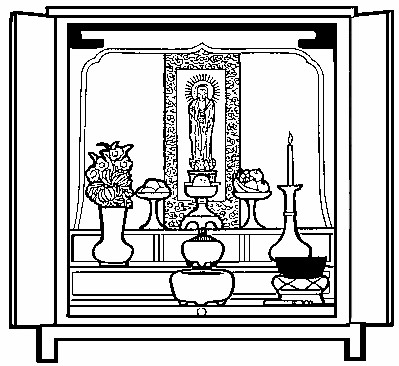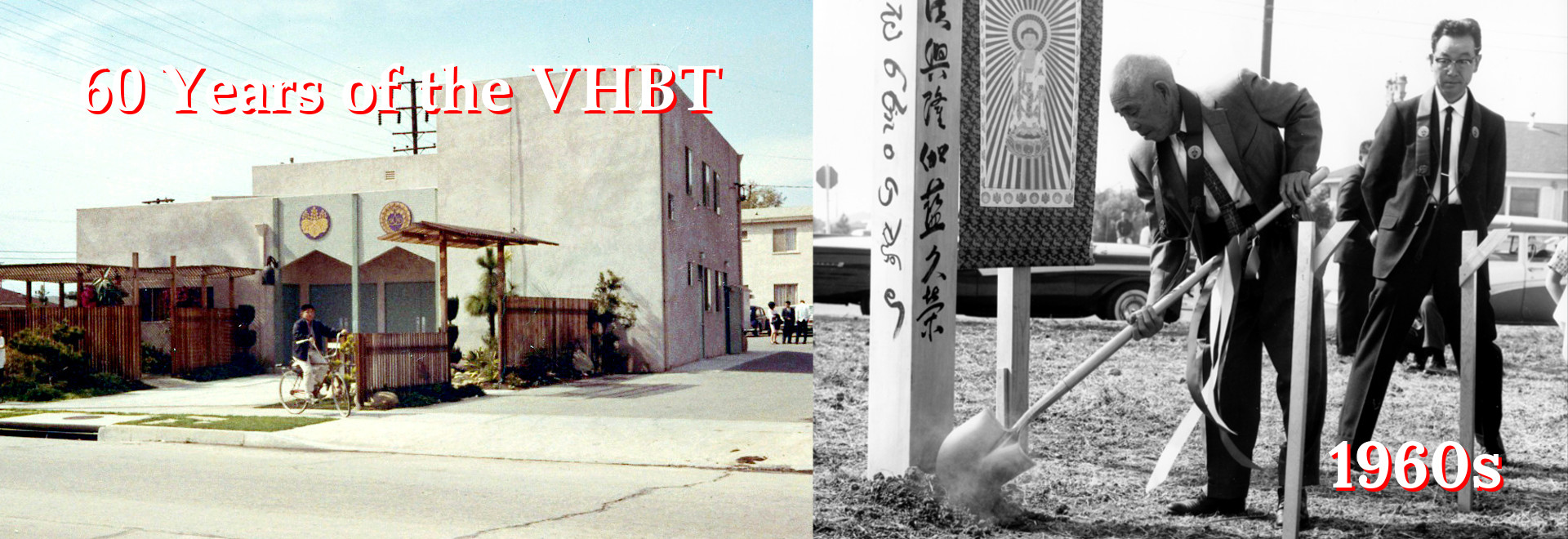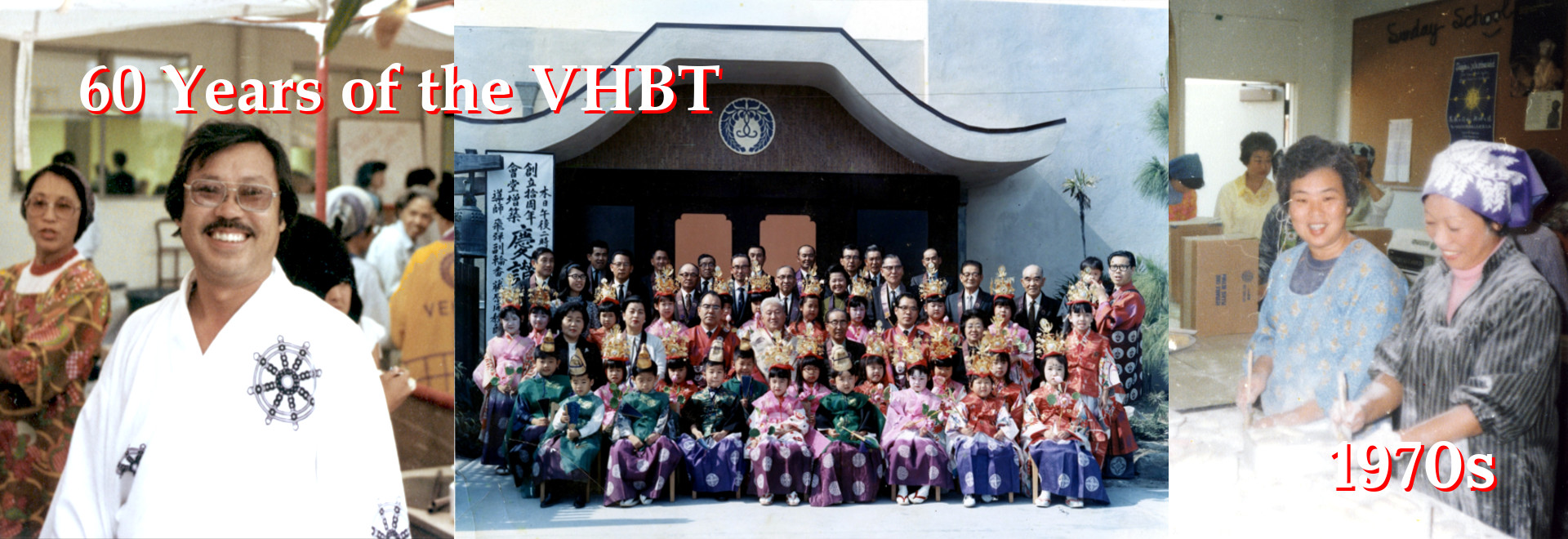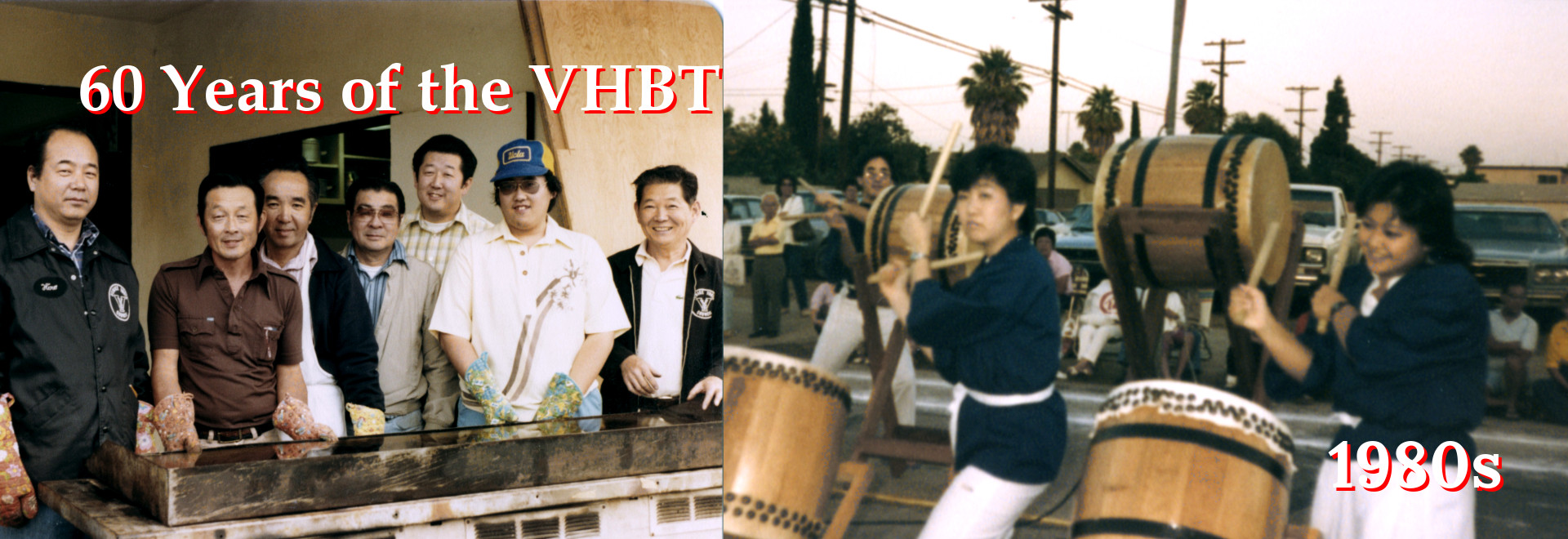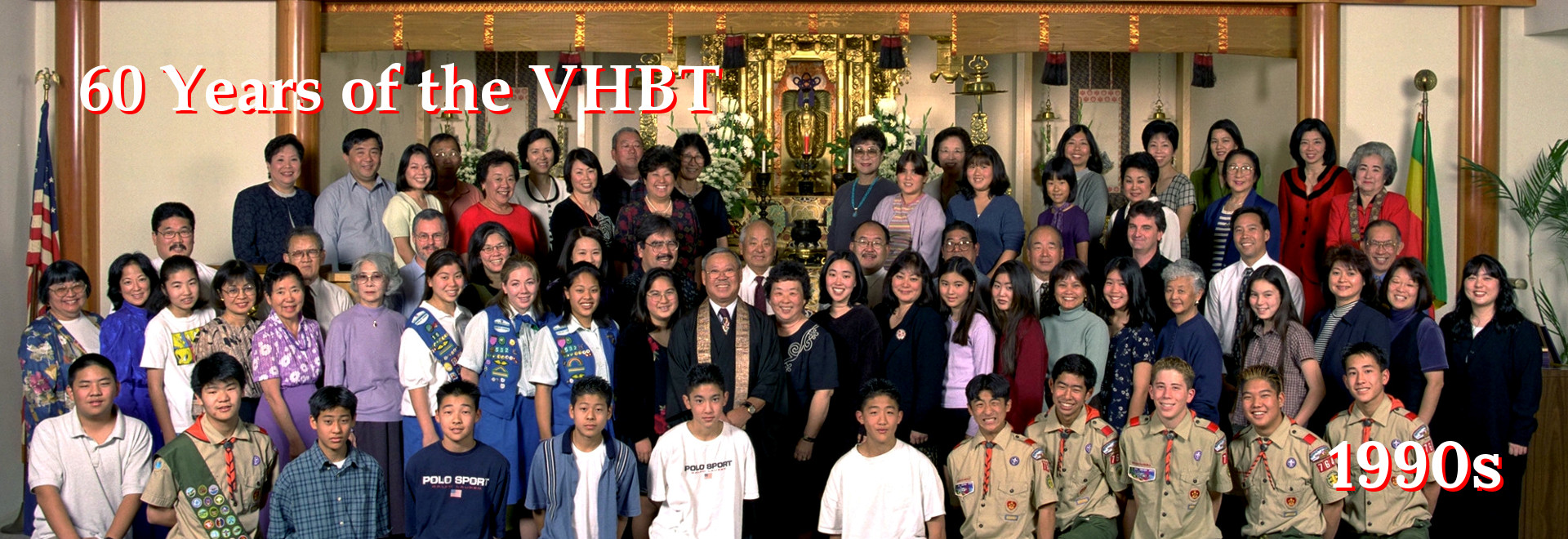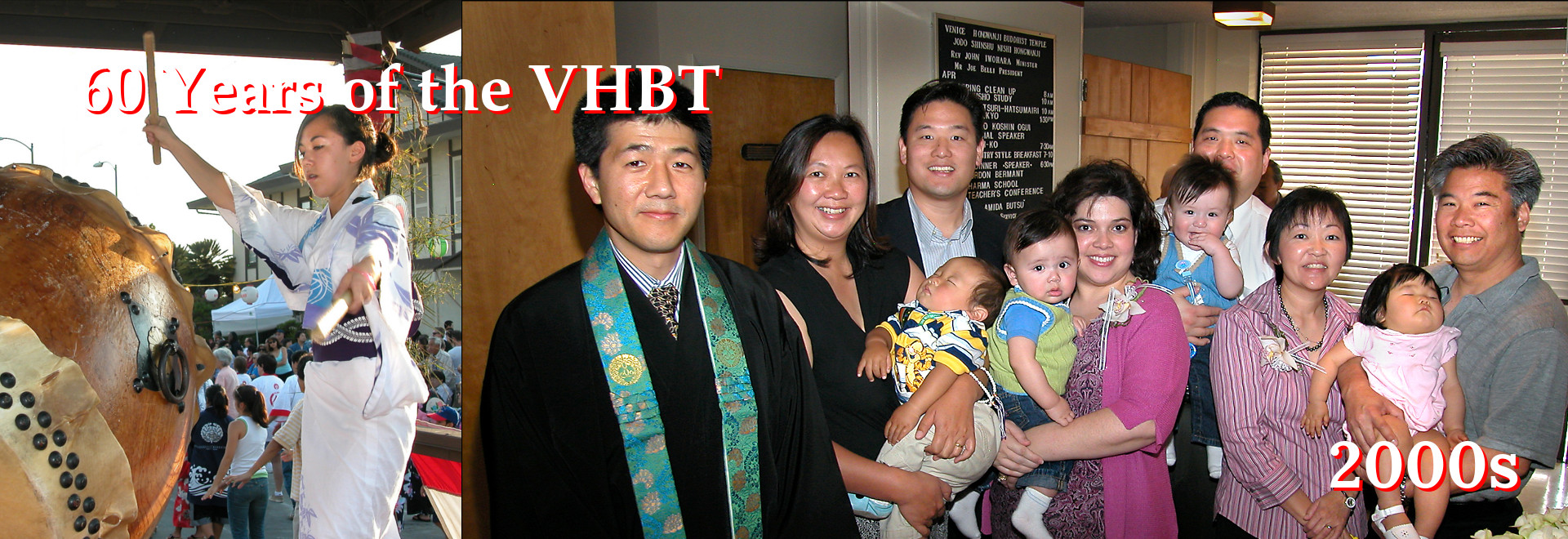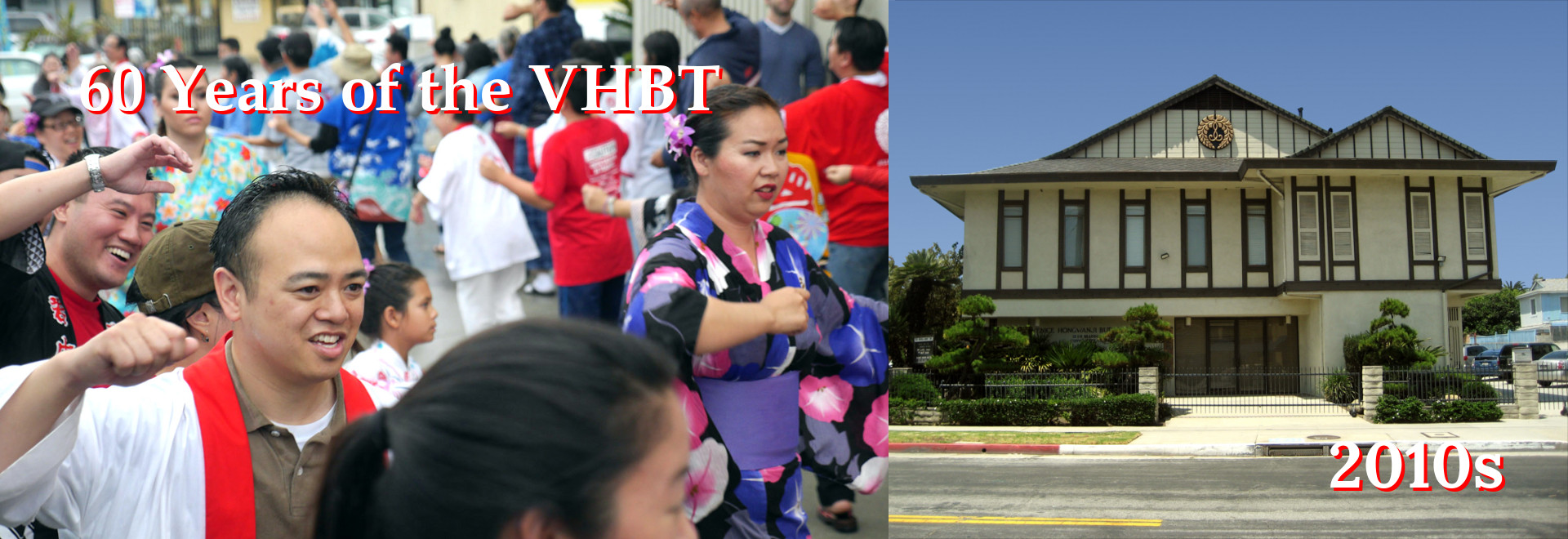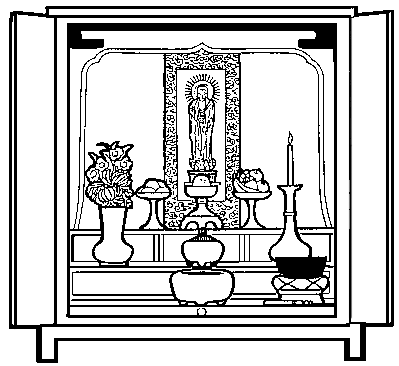
The Buddhist shrine is a beautiful reminder of Amida and his teaching.
The Figure of Amida Buddha
The Buddha of Infinite Wisdom and compassion, occupies the central position in the Butsudan. In some temples and home Butsudans, a scroll bearing the characters “Namo Amida Butsu”, or a picture representing Amida, occupies the central position. The adherents of Buddhism do not worship the image of Amida Buddha, but bow their heads in reverence before the wisdom and compassion of Amida, which the figure of picture represents.
Candle
Light symbolizes the Wisdom of the Buddha, which drives away the darkness of the human mind and shines without discrimination on all. We need the light of the Buddha’s teachings to help us. The lights remind us not to remain in darkness but to brighten ourselves with the Buddha’s teachings.
Incense Burning
The practice of burning incense is symbolic of a spiritual “cleansing” or preparation for approaching the Buddha and listening to the Dharma. When we burn incense it helps us to remember to think kind and beautiful thoughts, we must try to get all the bad thoughts out of our mind. We burn incense to remind ourselves to do away with our petty thoughts and selfish acts.
A lovely, fragrant odor give us a happy uplifting feeling. In the same way, we draw away from an evil odor. The incense used in Buddhist Temples are especially made to have a gentle fragrance and to fill our minds with pure thoughts.
Break the incense sticks into lengths which will fit across the incense burner. Light one end of the incense and fan the flame out, do not blow. Lay the incense down and replace the cover, if any. The burner should be about half filled with ashes, if not for any reason, it may be temporarily filled with salt.
A little dog lion sits on the top. He is there to protect us.
Flowers
Flowers are symbolic of the impermanence of this life, therefore artificial flowers should not be used. Flowers help us to remember about change that is taking place all around us. They remind us that just like them, we are constantly changing. Flowers should be kept fresh at all times.
Food
Offerings of food are made as an expression of thankfulness and gratitude. Rice is traditionally offered in Japan. Sweet cakes, vegetables and fruits are also offered, on special occasions. Fish or any form of animal flesh is never offered.
It has become the practice to offer the first portion of each days rice to the Obutsudan. Other customs regarding offerings on important Buddhist occasion include:
- New Year: Omochi
- Ohigan: Odango
- Hanamatsuri: Sweet tea and flower
- Obon: Somen and things customarily connected with the Thanksgiving season and harvest such as cucumber, eggplant, peaches, melons, etc.
Offerings of Ohatsu are made in the sense of giving the “first of the season” to the Buddha.
Gong
The gong is used during services to call attention at the beginning of a sutra chant and in dividing the sutra into portions.
The little brass gong has a high tinkling ring. When struck on the inside, it seems to signal the service is about to begin. The large black gong has a deep and low ring.
The correct way of striking the gong is to use a wrist action and strike the gong lightly but briskly. Hit the upper part of the gong using a right to left motion (not up and down).
The Significance of Amida Buddha in the Shrine
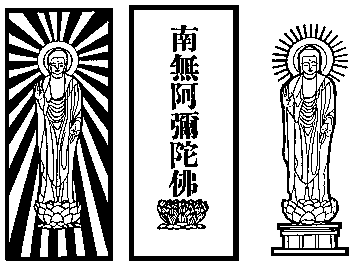
The picture or statue of Amida Buddha is usually depicted standing with eyes half-closed, with right hand up making a circle with index finger and thumb and with left hand palm upward stretched out toward the viewer. The statue of Amida, as seen from the side, is leaning slightly forward. All these have religious meaning.
The gentle facial expression reflects infinite wisdom, serenity, compassion and love. The statue having the eyes half-open and half-closed shows a perfect harmony of outer and inner life. Half of the vision is directed externally (concern for the outer world) and at the same time, the other half is directly internally for proper self-reflection. The right index finger and thumb forming a circle depicts complete harmony. The left hand palm upward expresses the dynamic compassion of the Buddha to save all beings. The slightly leaning form of Amida’s statue indicates that the Buddha’s compassion and saving power reach all beings.
The halo or rays of light behind Amida Buddha symbolize the light to illuminate the dark world of ignorance and greed. The rays are drawn forty-eight in number which represent the great forty-eight vows of Amida to embrace every living being.
